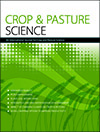CP21042Synchronisation of zinc application rates with arbuscular mycorrhizal fungi and phosphorus to maximise wheat growth and yield in zinc-deficient soil
 , Adel M. Ghoneim
, Adel M. Ghoneim  , Ayesha Ilyas, Arslan Akram, Shah Fahad
, Ayesha Ilyas, Arslan Akram, Shah Fahad  , Mohammad Javed Ansari and Rahul Datta
, Mohammad Javed Ansari and Rahul Datta
Imbalanced application of P and Zn usually disturbs the uptake of both nutrients in plants. Both show antagonistic relation with each other when applied in soil as inorganic fertilisers. However, inoculation of arbuscular mycorrhizae fungi (AMF) can improve the uptake of P. For development of a balance between P and Zn in soil, current study focussed on the combined use of an inorganic P and Zn fertiliser with AMF. The aim of the study was to maximise the wheat yield via judicious use of P and Zn in the presence of AMF.




